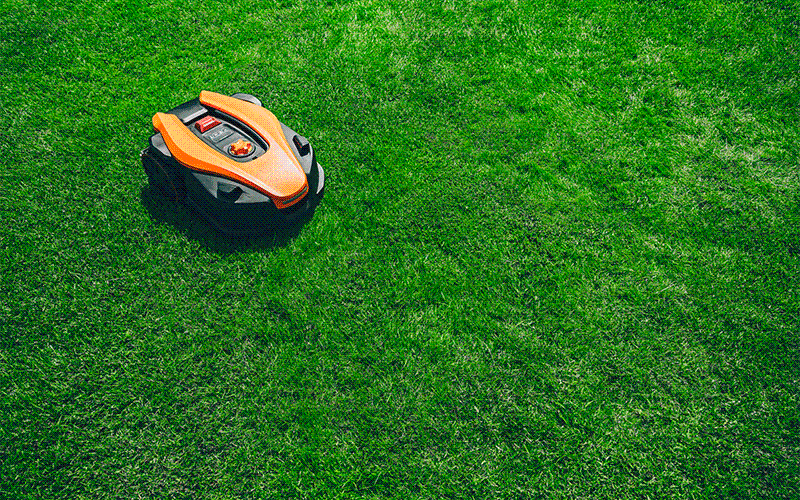
BALI safety guide: using remote control/robotic mowers on slopes
As remote control and robotic mowers continue to grow in popularity, in both domestic and commercial settings, we take the opportunity to remind users of some important safety considerations.
BALI has produced a comprehensive safety guide to working on slopes for the landscape industry, covering risk assessment and management, key safety considerations, and the use of machinery such as remote-control mowers.
The section on remote-control mowers – which is largely applicable to robotic mowers too – sets out the following specific risks associated with the using the machines on slopes and tips for reducing the likelihood of incidents occurring:
Specific risks
- Machine loses traction on slope due to surface conditions results in operator losing control.
- Machine becomes unstable/over-turns on slope resulting in operator losing control.
- A component of the machine becomes detached and is ejected from the machine.
- Mown debris is ejected from the machine.
- The operator slips or trips whilst operating the machine.
Tips for managing r
- Remote controlled mowers are subject to operational limits in terms of gradient, which must be adhered to. Specific models of mower differ in their operation and risks associated with their use. The manufacturer handbook must always be consulted prior to allocation of equipment to sites and operation.
- Some remote-controlled mowers feature a winch, which a) enables the mower to work on particularly steep slopes and b) reduce ground disturbance. Consult the manufacturers instruction manual to ensure this device is used correctly.
- The maximum recommended working gradient of remote-controlled mowers is significantly lower in wet weather. Check operator manual for more information.
- When using any machine on a slope, the operator must not enter the area directly above or below the machine when it is in operation. Respect the safety distance between operator and machine specified by the manufacturer (commonly a minimum of 5 metres).
- Ensure third parties do not breach the safety distance specified by the manufacturer, commonly in the region of 15 metres. Cordons, barriers, or signage may be used to delineate this safe distance.
- If the machine is stopped on a slope, the wheels must be positioned across the slope to prevent the vehicle moving.
- Maintenance and pre-use checks of all machinery are essential to guarantee safety and useability of equipment.
- A site-specific assessment must be carried out by a supervisor prior to allocation of the machine, together with a risk assessment by the operative prior to use on site.
- The risk assessment should note the presence of significant obstacles, as well as the terrain and nature of slopes. A risk assessment carried out by the operator prior to each work activity should note the weather conditions and terrain and take these into account during use.
